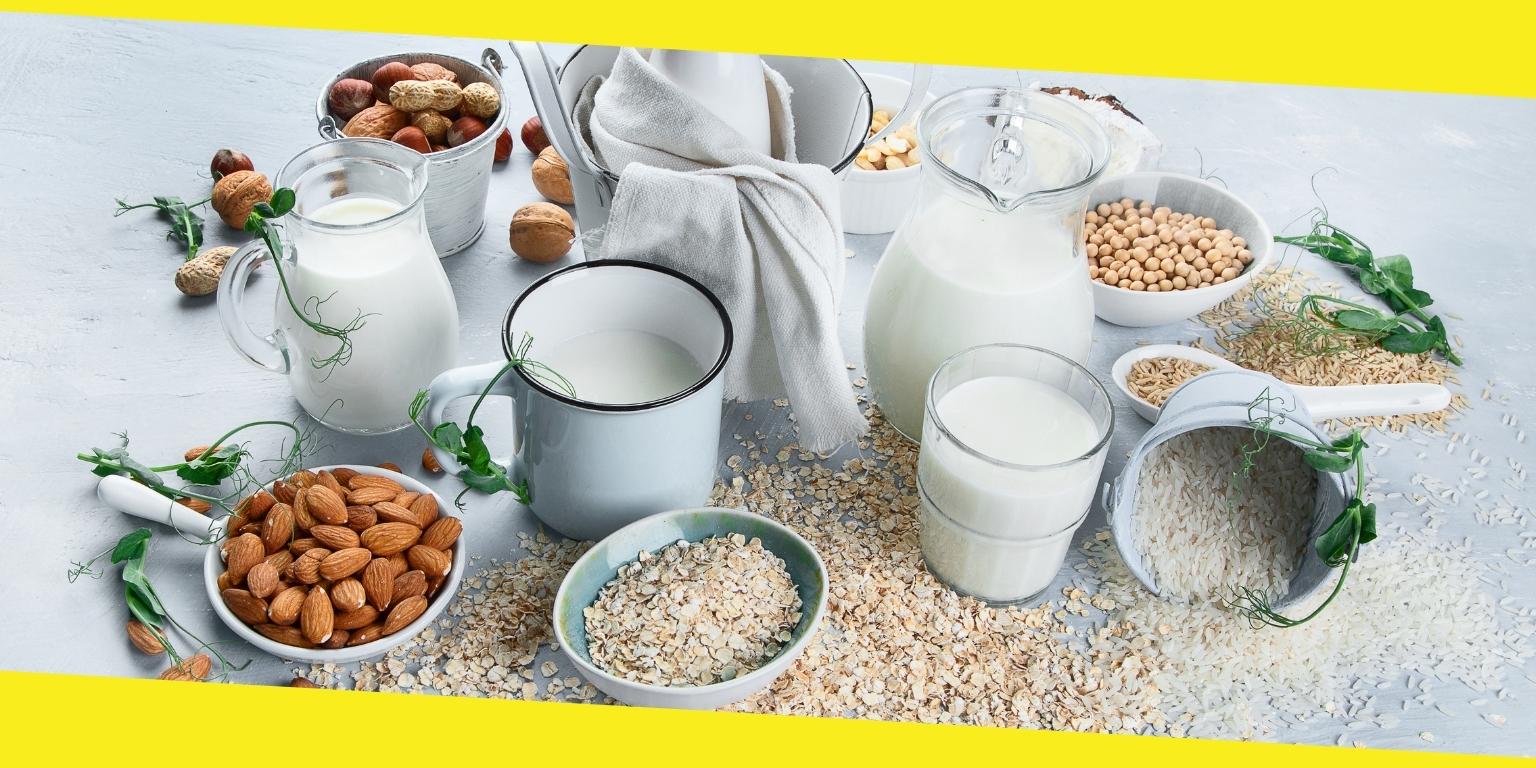The Best Plant-based Milk: A Complete Guide

The world is changing rapidly, and it is becoming increasingly important to lead a life that is both environmentally friendly and socially responsible. Plant-based milk substitutes are the first step toward a more sustainable lifestyle.
The best plant-based milk replacements were already popular in kitchens and cafés throughout the world before the rise of plant-based meals. Even though cow’s milk has long been regarded as a mainstay of the American diet, lactose intolerance, dietary limitations, and ethical concerns have driven many to seek alternatives.
Getting started with a plant-based milk diet might be intimidating since there are so many options to select from. Here are some of the most prevalent differences and what to look for while making a buy in the future.
Contents
ToggleSoy milk
Soy protein powder or powdered soybeans are used to make soy milk. Protein content in soy milk is higher than in other plant-based milk replacements.
Soy milk, on the other hand, is usually supplemented with calcium, making it more like cow’s milk.
As a vegan, you may be at danger of vitamin B12 deficiency, which is why many soy milks include additional vitamin B12.
Almond milk
Ground almonds are used in the production of almonds. Depending on the brand, commercial almond milk can include anywhere from 2% to 14% almonds. However, there are a number of sugar-free options available.
Almond milk has a lower calorie count and fat content than regular milk. With a normal portion of one gram of protein, it has a low protein content as a whole
Recently, however, protein has been added to several kinds, with some containing as much as 10 g of protein every 250 mL. Compare this to the eight grams of protein in a serving of cow’s milk.
Soy, lactose, and dairy-free almond milk is available. Soy or dairy allergies or lactose intolerances are not a problem for this product.
Look for almond milks that provide at least calcium, vitamin B12 and vitamin D, as a minimum, if you’re using almond milk in place of dairy milk. Fortunately, this is the case with the vast majority of items on the market.
Oat milk
When oats and water are blended together, the liquid is strained out. Saturated fat content is low.
Oat milk, unlike other plant-based milks, includes beta-glucan, which is a rich source of fiber. The cholesterol-lowering and blood sugar-regulating properties of beta-glucan have been demonstrated.
Because oat milk has a greater carbohydrate content than cow’s milk, it is naturally sweet. Oat milk can be used as a substitute for cow’s milk in cooking because of its qualities.
The creamiest plant-based milk is oat milk, which is ideal for meals that call for a creamy texture.
Oat milk contains half as much protein as dairy milk, on average, at only four grams per cup. Because unsweetened oat milk lacks calcium, it’s best to go with a calcium-fortified variety. Also, look for a product with a greater protein content.
Oat milk is not gluten-free.
Rice milk
Rice milk is created from milled brown rice and water and is completely free of any allergens, making it ideal for those with food allergies. Rice has a distinctively sweet flavor due to the breakdown of carbs into smaller sugars during processing.
Among the plant-based milks, rice milk is the least likely to set up an allergic reaction in some people.
Look for rice milk that has been supplemented with protein and calcium, preferably 100 milligrams per 100 milliliters.
Because of its low protein content, rice milk is an unsuitable substitute for parents of developing infants. Infants should be nursed for a minimum of six months before they are weaned.
If a young child’s diet frequently includes dairy alternatives like almond or rice milk, he or she will require more protein and energy from solid food sources to maintain a healthy diet. Visit a vegan or plant-based pediatric dietician for advice.
Macadamia milk
Soaked macadamia nuts are blended with water to make macadamia milk. Protein and calcium levels in macadamia milk are low by nature. In macadamia milk, the majority of the fat is unsaturated.
Macadamia milk is a wonderful dairy substitute because of its creamy consistency. There are fortified varieties of macadamia milk that are healthier alternatives to plant-based dairy milk since they have added calcium, vitamin D, and vitamin B12.
Pea milk
Fortification can be added to pea milk by combining the protein derived from peas with sunflower oil, water, and additional nutrients, such as vitamin B12. Pea milk has a similar protein content as fortified plant milk.
Hemp milk
Blending hemp seeds from the hemp plant with water produces hemp milk. Hemp milk, on the other hand, does not contain any intoxicating chemicals.
Hemp milk has a lower kilojoule count, protein content, and carbohydrate content than whole milk. Omega-3 fatty acids are also found in abundance in this product. It’s best to buy hemp milk that has been supplemented with calcium, B12, and vitamin D, which are all found in commercial hemp milk.
Coconut milk
By diluting coconut cream with water, coconut milk is created. Coconut milk has a lower carbohydrate and protein content than plant-based dairy milk, but it has a greater saturated fat content. Choose a fortified variety if you want to make up for the lack of calcium in your diet.
Picking the right milk can be a challenging task, so here are some helpful tips.
Plant-based milk is a fantastic starting step if you want to limit your consumption’s impact on the environment. When you do, bear in mind the following advice:
1. Get rid of insecticides.
As a result of their lack of pesticides and herbicides, organic plant-based milks are better for the environment than conventionally produced ones.
2. Substitute all of the ingredients in the recipe
It is important to remember that any milk additions — such as flavorings, sweetness or vitamins — have their own environmental imprint.
3. Take into account the packaging
You may help lessen your environmental footprint by purchasing milk that is packaged in recyclable materials. For example, plastic packaging accounts for 45 percent of California’s almond milk’s greenhouse gas emissions.
4. Don’t throw away money you’ve already spent.
Waste milk has the same environmental impact as food waste since it implies that all the land, water and energy needed to create it are thrown away.
5. Have a wide range of milks to choose from
There is a risk of overexploiting the market for a single plant-based option, even if it is more ecologically friendly than dairy milk.
There are a number of alternatives available when it comes to picking your favorite milk. Depending on your health and preferences, you must first choose between drinking dairy milk or plant-based milk. If you’re going to drink milk made from plants, nuts, seeds, or grains, make sure you pick the one that’s right for you. To summarize, plant-based milks do provide health advantages as a source of essential nutrients that can improve one’s overall state of well-being, as previously described. You’ll be surprised at how tasty and simple it is to produce your own plant-based milk if you take your time to locate the ones that work best for you.
Recommended For You
Essences That Celebrities Love
Most Inside
Most Inside offers high-quality recommendations and valuable updates to enhance all aspects of your life, providing premium guidance and enriching experiences.




